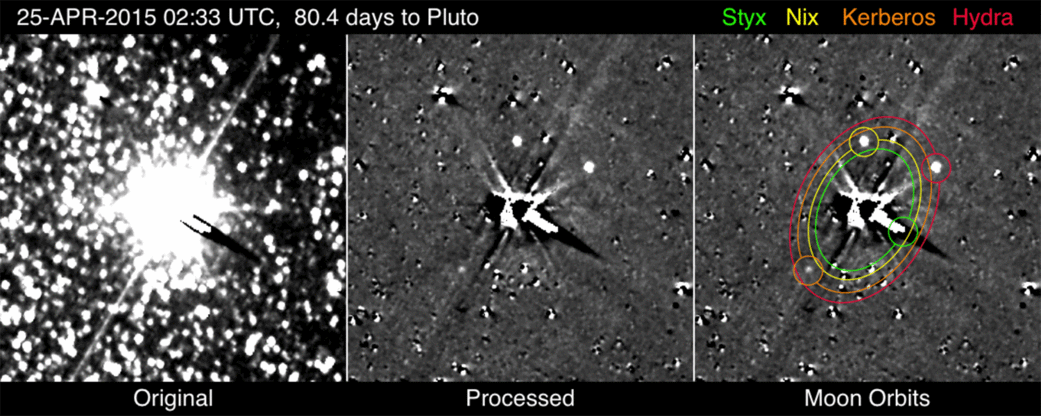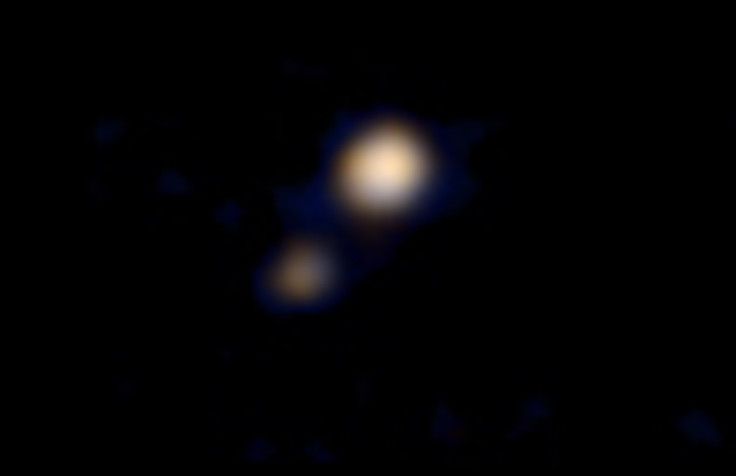Nasa's New Horizons photographs Pluto's moons Kerberos and Styx for the first time

Pluto's moons Kerberos and Styx have been photographed for the first time by Nasa's New Horizons spacecraft.
The final two of Pluto's five moons were pictured as New Horizons edges closer to the dwarf planet – it is due to make its flyby in July – and scientists say additional moons could emerge as the spacecraft gets nearer.
John Spencer, of the Southwest Research Institute in Boulder, Colorado, said: "New Horizons is now on the threshold of discovery. If the spacecraft observes any additional moons as we get closer to Pluto, they will be worlds that no one has seen before."
Kerberos and Styx were discovered in 2011 and 2012 respectively using the Hubble Space Telescope.
Styx circles Pluto every 20 days between the orbits of Nix and Charon, the planet's giant moon. Scientists believe it is just for to 14 miles (seven to 21km) in diameter.

Kerberos orbits Pluto every 32 days between Nix and Hydra and is between six and 20 miles (10 to 30km) in diameter.
The images beamed back to Nasa will allow scientists to refine the techniques they plan to use to analyse data being returned. They were photographed using New Horizons' most sensitive camera – the Long Range Reconnaissance Imager (LORRI) – between 25 April and 1 May.
Each observation includes five 10 second exposures added together to create the image. While the two moons are more visible in some frames than others, their identities were confirmed by their positions being exactly where predicted.
"Detecting these tiny moons from a distance of more than 55 million miles is amazing, and a credit to the team that built our LORRI long-range camera and John Spencer's team of moon and ring hunters," Alan Stern, New Horizons Principal Investigator, said.
© Copyright IBTimes 2025. All rights reserved.






















